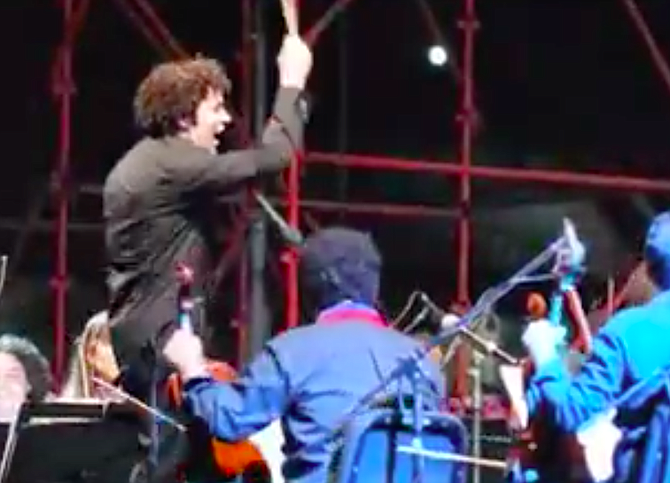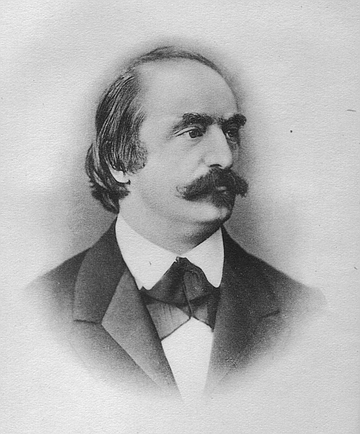 Facebook
Facebook
 X
X
 Instagram
Instagram
 TikTok
TikTok
 Youtube
Youtube

There was a new piece of music at the closing concert of the Jacobs Masterworks Series at the San Diego Symphony. I didn’t review it because, in my opinion, it wasn’t worth reviewing. I spent the space on Rachmaninoff and Beethoven, the two geniuses who were in the room.
Over the years I’ve heard how important it is to have new compositions for the concert hall and the opera stage. If a new audience is to be found, new music must be written because “new audience” and “new music” go together.

What if new music doesn’t bring a new audience? In spite of all the new compositions which have been commissioned, we still hear consistent reports about declining audiences across the country. There is one exception. The LA PHIL has built something of an audience for new music. I would argue that is more about Gustavo Dudamel’s brand and less about how much Angelenos thirst for new orchestral pieces.
What if the canon is closed? No more new music. Does that mean the concert hall and opera stage become dusty museums? That’s what we’ve been told.
First of all, I’ve never been to a dusty museum. I’ve been to museums which are spotlessly maintained with an air of respect and reverence for the artwork which they contain. Every day, people go to museums and see pieces of art for the first time — pieces of art which are hundreds and even thousands of years old.
Each generation discovers great art for itself. At some point, someone sees the Mona Lisa for the first time. That person might be five years old or 50 years old. The point it that the Mona Lisa doesn’t change but the people viewing it for the first time are always new.
The American concert hall needs more 30 and 40 year olds? Guess what they’ve never heard? Everything. No new music needed.
We will never return to the 19th Century when new masterpieces seemed to arrive every single year. Why?
In December 1888, the influential music critic Eduard Hanslick wrote in the Neue Freie Presse: “His songs make excellent Christmas presents.” Hanslick was referring to the recently published Zigeunerlieder by Johannes Brahms.
We no longer live in a culture in which leading media outlets suggest that songs by Brahms are excellent stocking stuffers. We live in a much less musical culture. We have access to musical consumption in vast quantities but the musical acumen of the average person may as well be non-existent.
At the same time the musical acumen required to comprehend a new composition is out past the moon. Brahms was accused of writing music for a middle-class audience. Fine. In many ways he was. New compositions appear to be for an audience which is something other than the middle class. Brahms himself is no longer for the middle class.
As always, an audience which has been musically educated would make all the difference. Of all the tens of thousands of students graduating high school this month, how many can sing or play a major scale?


There was a new piece of music at the closing concert of the Jacobs Masterworks Series at the San Diego Symphony. I didn’t review it because, in my opinion, it wasn’t worth reviewing. I spent the space on Rachmaninoff and Beethoven, the two geniuses who were in the room.
Over the years I’ve heard how important it is to have new compositions for the concert hall and the opera stage. If a new audience is to be found, new music must be written because “new audience” and “new music” go together.

What if new music doesn’t bring a new audience? In spite of all the new compositions which have been commissioned, we still hear consistent reports about declining audiences across the country. There is one exception. The LA PHIL has built something of an audience for new music. I would argue that is more about Gustavo Dudamel’s brand and less about how much Angelenos thirst for new orchestral pieces.
What if the canon is closed? No more new music. Does that mean the concert hall and opera stage become dusty museums? That’s what we’ve been told.
First of all, I’ve never been to a dusty museum. I’ve been to museums which are spotlessly maintained with an air of respect and reverence for the artwork which they contain. Every day, people go to museums and see pieces of art for the first time — pieces of art which are hundreds and even thousands of years old.
Each generation discovers great art for itself. At some point, someone sees the Mona Lisa for the first time. That person might be five years old or 50 years old. The point it that the Mona Lisa doesn’t change but the people viewing it for the first time are always new.
The American concert hall needs more 30 and 40 year olds? Guess what they’ve never heard? Everything. No new music needed.
We will never return to the 19th Century when new masterpieces seemed to arrive every single year. Why?
In December 1888, the influential music critic Eduard Hanslick wrote in the Neue Freie Presse: “His songs make excellent Christmas presents.” Hanslick was referring to the recently published Zigeunerlieder by Johannes Brahms.
We no longer live in a culture in which leading media outlets suggest that songs by Brahms are excellent stocking stuffers. We live in a much less musical culture. We have access to musical consumption in vast quantities but the musical acumen of the average person may as well be non-existent.
At the same time the musical acumen required to comprehend a new composition is out past the moon. Brahms was accused of writing music for a middle-class audience. Fine. In many ways he was. New compositions appear to be for an audience which is something other than the middle class. Brahms himself is no longer for the middle class.
As always, an audience which has been musically educated would make all the difference. Of all the tens of thousands of students graduating high school this month, how many can sing or play a major scale?
Comments